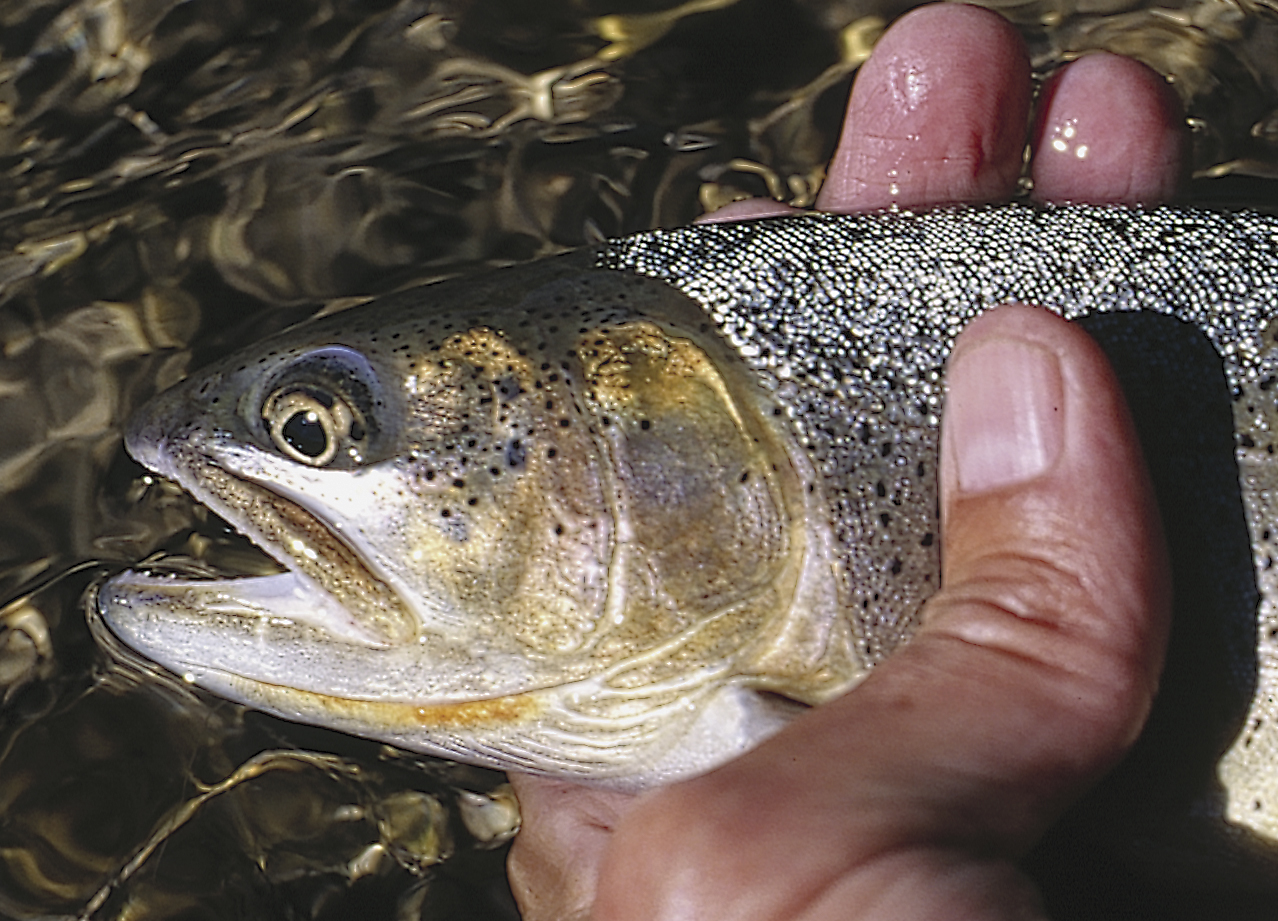
20 Aug Old School
WE WERE BIVOUACKED at the Dead Swede Campground,drawing gallowshumor from a Minnesota family named Erickson as we roasted s’mores around the campfire. The situation would have made a perfect anecdote for Minnesota author and Prairie Home Companion public radio show host, Garrison Keillor. You can almost hear some inebriated resident of Keillor’s mythical Lake Wobegon, sitting in the Sidetrack Tap, boring the other local patrons about his summer vacation way out West.
Those lucky enough to have started fly fishing as youngsters have the first snapshots of success burned permanently into memory. My early angler’s epiphany occurred on that family vacation, high in Wyoming’s Big Horn Mountains. On an azure July morning, I marched upstream from Dead Swede with leaky rubber waders and a ten-buck fiberglass fly rod to beautiful, clear pools on the South Tongue River. This was a time in my fishing career when every situation demanded a bumble bee-sized Royal Coachman; crudely self-tied on 20-below-zero nights on a cheap Herter’s vise, I hitched it to a lariatlike leader.
I quickly captured a half-dozen pan-sized brookies and browns — great success in those days — which I lugged back to proudly show my parents and duly unimpressed sisters. Looking back, it’s astonishing I caught anything. But having recently returned to Dead Swede for the first time in decades, I was pleased to see little had changed: The mountain meadows were as pristine as I remembered, the trout still prolific and gullible.
The South Tongue will always have a fond spot in my angler’s soul. But it’s only one component of a diverse watershed, set within a complex historical context. Harboring multiple species of trout and warm-water game fish in both Wyoming and Montana, the Tongue River fortunately remains an afterthought for most visiting anglers, overshadowed by luminaries like the nearby Bighorn River. The Tongue harks back to a simpler time, before the driftboat armadas; when fly rods cost less than a first car, starter castles didn’t lord over riverbanks and trout were less wily. Back when the U.S. Army could while away downtime fishing for Yellowstone cutthroats. You can’t visit the Tongue River without drifting back to the past between casts.
Christened after a limestone rock formation that Crow Indians thought resembled a bison tongue, the stream rises in the Bighorn National Forest, west of Sheridan, Wyo. Draining scattered 10,000-foot promontories, the Tongue’s headwaters meander across a high mountain plateau, in contrast to the more extreme topography just to the south, where Cloud Peak soars to 13,175 feet.
Like U.S. Highway 14, the spectacular main thoroughfare through the northern Big Horns, the Tongue River forks into north and south branches near Burgess Junction. The North Tongue follows U.S. 14 Alternate (A) west, winding up to the expansive vistas of 9,400-foot Baldy Pass. The South Tongue, on the other hand, splits south with U.S. 14, its upper tributaries draining the northern edge of the Cloud Peak Wilderness.
Below Burgess Junction, the North and South Tongue merge. Even with the combined water of the branches, the Tongue remains a modest river, although it can be fierce during spring runoff. The main stem slices a deep chasm as it snakes east out of the Big Horns, its inner recesses comprised of a box canyon that fends off all but the most intrepid fly anglers. Near Dayton, Wyo., it tumbles out of the canyon, gradually transforming from a trout stream into a high plains, warm-water fishery.
North of Sheridan, the Tongue rambles across the Wyoming border where it enters Tongue River Reservoir, one of the most diverse and productive warm-water fisheries in Montana. In the canyon below Tongue River Dam, the fishery morphs back to trout, benefiting from a tailwater effect. As the river works north through sprawling ranches, it once again warms and loses gradient. Finally, more than 200 river miles from the Montana border, the Tongue joins the Yellowstone River at Miles City.
A Different Kind of Sister: The South Tongue
INITIAL MAP RESEARCH erroneously suggests the North and South Tongue offer similar angling opportunities. Both streams are comparably sized, surrounded by public land and run through beautiful, 8,000-foot-high valleys. In reality, the two branches are like non-identical twin sisters that friends can’t believe are from the same family. Due to differences in geology, management and species, the branches are dissimilar yet equally appealing.
The South Tongue begins with the convergence of the East and West Forks, both offering plenty of eager, petite trout. An additional enticement on the East Fork are remnants of a historic log “splash” dam, used a century ago to flush freshly cut railroad ties downstream in flumes, racing thousands of vertical feet out of the Big Horns at modern Wyoming freeway speeds.
Draining infertile granite bedrock, the South Tongue supports mostly small browns, rainbows and brook trout, the latter becoming increasingly dominant upstream. The river hasn’t been stocked since 1990; the trout are wild and very abundant, with more than 4,000 fish per mile in some reaches. Anglers who enjoy grilled brook trout over the campfire can indulge without guilt here and help the fishery. Unlike its sister, the South Tongue has excellent spawning habitat, but lacks sufficient cover and nutrients to grow many large trout: A 14-incher is a good fish, although larger browns are periodically taken.
The South Tongue is small and easy to negotiate after runoff ends in July. Threading through a delightful mix of pine forest and mountain parks, the stream affords a diversity of pocket water, slick runs, and occasional deep pools. According to Scott Heywood of Sheridan’s Angling Destinations, Inc., “the South Tongue is a great place to use attractors.” Unlike the Bighorn, Missouri or North Platte, these fish never remained in school long enough to earn a Ph.D. in fly angler chicanery. As demonstrated by my adolescent success, the South Tongue is a great place for families. One caution, however: The water is very clear, requiring a stealthy, deliberate approach on the quieter reaches.
One summer afternoon on the South Tongue, I was enjoying great fast-water sport harassing small browns and brookies with meaty Humpies and Turck Tarantulas. Eventually, I made it to a slick pool where I observed several cruising trout picking off the occasional bug. I figured the fish would eagerly grab a Humpy, but I was wrong.
After several refusals, I tied on 6X tippet and a size-18 black foam ant, and I crept into position on hands and knees. Gently dropping my fly where I guessed my quarry was headed, I was rewarded with a beautiful brown. In short order, I fooled several more fish on the ant, before switching back to the Humpy as I moved back to quicker water.
Camped at Dead Swede that evening, I ran into some gregarious Wisconsin anglers who, after assessing the Green Bay Packers’ prospects in detail and grumbling about Brett Favre, raved about how much bigger the North Tongue fish were. When they incidentally mentioned catching numerous 16- to 18-inch cutthroats and browns that smacked “everything black,” my attention picked up. I’ve been suckered by many fishing cock-and-bull stories that never panned out, however, so I didn’t let the Wisconsinites inflate my modest ex-Minnesotan expectations too much.
Geology as Destiny: The North Tongue
FOLLOWING THE HOT TIP, I pulled into an access along the North Tongue the next morning. West of Burgess Junction, the river undulates through a broad valley that gradually tightens upstream, cutting through willows, sage meadows and scattered pines. Walking up to a glassy run, I was immediately encouraged to see several panic-stricken trout race upstream, each several inches longer than the average South Tongue fish. Perhaps the cheeseheads had given me the straight scoop, after all.
In many respects, geology is destiny for trout. Draining fertile Paleozoic-era Madison limestone, Flathead sandstone, Gros Ventre shale and Bighorn dolomite, the North Tongue nurtures cutthroats that can push 20 inches, in addition to browns, rainbows and brookies.
Savvy fly anglers know that limestone often sets the stage for trout nirvana. Fossiliferous sedimentary bedrock deposited hundreds of million of years ago by warm seas acts as an enormous sponge, absorbing moisture and then releasing it in steady, trout-friendly increments. Springs percolating through the calcium and carbonate-rich limestone enhance productivity, moderate stream temperatures and buffer pH levels, producing excellent conditions for both aquatic insects and trout.
Above the mouth of Bull Creek, special regulations are in place: All trout except brookies must be released and bait fishing is prohibited. The Wyoming Game and Fish Department (WGFD) stocks this section with both Snake River and Yellowstone cutthroat subspecies, the latter being the native trout in the watershed. Historically, the Tongue drainage hosted prodigious quantities of Yellowstone cutts, one of the easternmost concentrations in the northern Rockies, finally fading out near the river’s Yellowstone River terminus.
WGFD fisheries supervisor, Bob McDowell, says his agency is working with the Forest Service to improve cutthroat natural reproduction in the upper North Tongue, which, in spite of the river’s capacity to grow large fish, has been impaired by historic habitat and management problems. McDowell says the goal is to develop a self-sustaining cutthroat fishery, and that the special regulations are working well toward that end. So well that some cutts are caught and released four or five times during the season.
The fish are plentiful but maintain advantages: Easily spooked in the clear water, they hang tight to the overhanging grass and roots, sulking in undercut banks or deep holes. Because of the cover, larger fish and more pressure, the North Tongue is less amenable for kids than its sister. Fish-holding areas can be tightly compressed, generating drag. Compounding the challenge, the willows cruelly reach out to snatch perfectly delivered flies. Of course, trout nearly everywhere enjoy foraging in riffles, and some surprisingly nice fish can be taken in these easier, shallow environs.
According to Heywood, the upper North Tongue offers some of the most technical, hatch-specific action on the river, sometimes fishing like a spring creek. He says the catch-and-release stretch “is not always easy,” but offers “world class water, as much fun as anywhere … ” Technical aspects notwithstanding, cutthroats can sometimes be pretty opportunistic. Because of the high elevation and cool mornings, Heywood advises the best action is usually from noon until dusk.
The North Tongue continues to offer fine fishing below Bull Creek, with more natural reproduction. Although general creel limits apply, fish surveys have found more than 2,000 trout per mile along this reach, mainly cutthroats and rainbows. Below Burgess, the river becomes increasingly remote, forested and swift as it works toward the South Tongue and the canyon. Due to dense willows and abundant moose, you need to be careful where you tread on the North Tongue.
Into the Canyon and Across the Great Plains
THE BIG HORNS ARE RENOWNED FOR STUNNING CANYONS, and none are grander than the gorge incised by the Tongue River. While much of the North and South Tongue are readily accessible by road, the main river’s chasm offers abundant seclusion and healthy wild trout for hikers.
Access to the lower canyon is via a gravel road running from Dayton to the Amsden Creek Wildlife Habitat Management Area, which provides elk winter range. Winding up the Tongue Canyon Road, the scenery changes from cottonwood bottoms to dramatic cliffs crowned with caves, spires, arches and old-growth ponderosa pines. Five miles southwest of town, the road ends at a trailhead and parking area.
Upstream, the Tongue accelerates, its flow broken by tank-sized rock slabs that sheered off the walls above. The river rushes down the hoodoo-studded canyon in a staircase of cascades and small waterfalls, exploding around enormous boulders; there is gorgeous pocket water, punctuated by olive-tinted pools deep enough to submerge several SUVs. This is a physically demanding reach, with treacherous wading, poison ivy and steep hillsides. Don’t even think about fishing here during peak runoff.
The exertion pays dividends: In addition to one of the prettiest hikes imaginable, the canyon holds strong populations of rainbows and browns, with some cutts mixed in. There is plenty of cover and the least accessible lairs don’t see many flies. Most trout run 8 to 12 inches, but bigger fish are present: On one trip into the gorge, Heywood hooked a pan-sized trout, which was subsequently chased by a marauding 2-foot brown. He put on a Woolly Bugger, heaved it out where the brute disappeared, then hooked and lost it.
Below the canyon, the Tongue enters a broad agricultural valley and gradually loses its fangs, as boulders turn to cobble and water is pulled for irrigation. Especially if you can get on private water, however, this reach has some excellent fishing. While public access becomes problematic, there are a few options. In Dayton, a pretty city park sits next to the river. The small town preserves the home of Susan Wissler, elected Wyoming’s first female mayor in 1911, among the first in the nation.
At nearby Ranchester, the Connor Battlefield State Historic Site offers pleasant, cottonwood-shaded campsites on a slow, looping reach of the Tongue. Like an English chalk stream, you can leisurely cast to rising fish from a bank of mowed park grass. No one wears tweeds, however: The mournful horns of endless, passing coal trains remind you that you’re still in Wyoming.
The park commemorates the 1865 Battle of Tongue River, where General Patrick Connor’s troops destroyed an Arapaho village headed by Chief Black Bear. This assault had significant repercussions: It inspired the Arapaho to join forces with the Sioux (Lakota) and Cheyenne a year later at the Fetterman Fight, along the Bozeman Trail south of Sheridan. It was one of the U.S. military’s worst defeats against the Plains Indians until the Battle of the Little Bighorn. Conner Battlefield was peaceful during my last visit, until a sizeable trout violently ripped off my Hare’s Ear while I was daydreaming.
Outstanding public fishing emerges again across the border near Decker, Mont., at Tongue River Reservoir State Park. Located at an elevation of 3,454 feet, the water in the reservoir drops more than a vertical mile from its Big Horn headwaters. The 12-mile-long reservoir — which has produced several state record fish — holds smallmouth bass, walleye, sauger, northern pike, crappie, perch, carp and channel catfish. While most anglers use spinning gear, there are opportunities for fly anglers.
Rainbows and browns patrol the river below the dam, amidst National Park-caliber scenery. Trout fade again as the river approaches Birney, Mont., the gradually warming water supporting smallmouth and rock bass, sauger, channel catfish and other species.
A fly angler likely wouldn’t pull an all-nighter from Seattle solely to fish this reach. On the other hand, there are few trout opportunities in southeastern Montana, and the Tongue provides an excellent excuse to visit this secluded region. Alas, conservationists fear coalbed methane and other energy development increasingly imperils the lower river’s scenery and high water quality. And a controversial new railroad is being planned for the valley to haul out coal. But the region’s exceptional beauty endures, for now.
Fooling Fish and Getting Fooled by Them
BRING THE BUSHY ATTRACTORS like Humpies, Renegades and Royal Wulffs to the upper Tongue, especially in faster water. A respite from condescendingly smart fish on the Bighorn River, you usually don’t need to get too fancy, the North Tongue sometimes being an exception.
Overall, hatches on the river produce a familiar cast of characters. As in many Western streams, the season begins with midges and Blue-Wing Olives, the latter running from March into June. Caddis first appear in the spring too, lasting until October; an Elk Hair Caddis makes an excellent search pattern. Summer mayflies include Green and Brown Drakes, Pale Morning Duns and Trico Spinner clouds, levitating into early fall. The season comes full circle when Olives and midges reassert themselves with cooler weather, as anglers also agonize over their streamer boxes.
The well-oxygenated water in the gorge provides good stonefly habitat: Golden Stoneflies and Yellow Sallies come off during the summer months. A Kaufmann Golden Stone or similarly beefy pattern bounced through deep canyon runs will entice nice fish any time.
Anglers should come equipped with a variety of terrestrial patterns, but these bugs aren’t necessarily created equal in the eyes of the Tongue’s fish. Exploring the North Tongue one afternoon, I was spooking plenty of fish but catching few. Increasingly frustrated, I experimented with various hopper permutations, including the reliable Parachute Madam-X (PMX); the fish remained largely lock-jawed.
Then, my aging memory managed to retrieve helpful information. Recollecting sage advice I’d received earlier from local expert Tom Wilcock, at Sheridan’s Fly Shop of the Big Horns: “Try anything black.” The Wisconsinites had provided similar counsel, and a guy at the access extolled the virtues of a certain, giant cricket/cicada pattern. The gears were finally starting to mesh in my brain.
Rooting through my terrestrial box, I pulled out a monstrous Chernobyl Ant. The bizarre foam creature sparked a dramatic piscatorial attitude adjustment. Plopping the bug down almost like a bass popper, I quickly landed several cutthroats between 13 and 15 inches, losing some larger specimens. I had my hands full, struggling to keep these miscreants from escaping back to their root-guarded sanctuaries.
Perhaps even more dramatic than the solid hits on the Chernobyl were periodic refusals. Sizeable cutts slowly drifted up from scoured holes to inspect the bug, bumped it contemptuously with their snouts, then flicked their tails and retreated. The rascals left me with a temporary bout of Tourette’s syndrome and nearly an aneurysm.
Rejections notwithstanding, I figured I was on to something. Fishing the canyon the next day, I confidently knotted up the Chernobyl that served me so well upstream. And in this faster water, the fish wouldn’t have time to scrutinize my ridiculous looking fly; I knew they’d hammer it.
Perhaps to keep my hubris in check, the fish ignored the gargantuan “ant.” What did these contrarian Epicureans desire? You guessed it: Tying on the PMX the North Tongue cutts had scorned, I proceeded to pull nearly 20 fish from the racing currents. They were mostly rainbows and browns, striking with a ferocity that eventually severed the fly’s rubber legs. On the hike out, I stopped to gape at a large, steadily rising trout protected by a precarious embankment and garage-sized rocks. If only I could have clambered down and put a fly over that fish. …
A Place for a Man to Lose Himself
IN ADDITION TO THE TONGUE, the Big Horns offer numerous stream and stillwater fishing options. Many waters are readily accessible, but the Cloud Peak Wilderness beckons for those seeking solitude. There are also abundant opportunities for hiking, mountain biking, horseback riding, wildlife viewing, geologic explorations, and luxuriating in mountain meadow wildflowers.
Both segments of U.S. 14 are designated scenic byways, among the most jaw-dropping drives in the Rockies. The Big Horns present many camping possibilities, but various lodges and hotels offer accommodations as well. On the eastern front, Sheridan remains a classic Western town and gateway for Tongue River anglers, providing fly shops and guides, historic attractions, and unexpected socio-political curiosities. During the Great Depression, for example, some Sheridan residents hatched an ultimately unsuccessful plan to bust loose with a new plains state called Absaroka, enveloping swaths of northern Wyoming, southern Montana and western South Dakota.
One local highlight is the Sheridan Inn, built in 1893; it became one of the finest hotels between Chicago and San Francisco, and is now listed as a National Historic Landmark. A frequent visitor was part owner, William “Buffalo Bill” Cody, who auditioned cowboys for his Wild West Show from a veranda rocking chair. The inn hosted many other notable guests over the decades, including Calamity Jane, Charlie Russell, Will Rogers, Teddy Roosevelt and Ernest Hemingway, reputedly while beginning his novel, A Farewell to Arms. The original oak and mahogany bar imported from England in the Buffalo Bill Saloon remains intact and still serves thirsty travelers.
Frontier battle sites are in the vicinity, too, including Fort Phil Kearny State Historic Site, the Wagon Box Fight Site and Rosebud Battlefield State Park. At Rosebud, General Crook’s troops interrupted their epic fishing expedition to do battle with a war party of Sioux and Cheyenne on June 17, 1876; eight days later, many of the same warriors helped defeat General Custer. Meanwhile, Crook’s men retreated back to the Tongue River country to resume their war on cutthroats. A marker in Sheridan commemorates their camp.
As my Minnesota family discovered on our vacation in the 1970s, the diverse Tongue River basin is a compelling destination, keeping everyone smiling, even at a campground named Dead Swede. Amidst all the crashes, burst bubbles and hurricane-force change today, glimpses of the past endure along the Tongue; it’s old school, just like Keillor, Favre and Hemingway.
Here’s a toast to make at the Buffalo Bill Saloon, after a good day’s fishing: Today’s young fly anglers will return in 30 years and be thrilled anew by the Tongue’s remarkable beauty, history and fly angling. I just did. As Cody himself said of the Sheridan area after an 1890 visit, “It would not be a bad place for a man to lose himself.”
- The Tongue River Canyon is mainly accessible to hiking anglers: Expect fast pocket water, deep pools, enticing runs and aggressive trout.
- The East Fork of the south Tongue River offers abundant brook trout and the remnants of an historic splash dam, used to flush railroad ties down a flume at speeds up to 80 miles an hour.
- Limestone and trout are a natural combination: Due to higher productivity and special regulations, the upper North Tongue supports cutthroats that can push 20 inches, with plenty of public access.
- A local highlight for visiting anglers is the Sheridan Inn; built in 1893, it became one of the finest hotels between Chicago and San Francisco, and is now listed as a National Historic Landmark. William ”Buffalo Bill” Cody once auditioned cowboys for his Wild West Show from a veranda rocking chair.
- In the scenic canyon tailwater below Montana‘s Tongue River Dam, fly anglers have a shot at rainbows, browns and smallmouth bass.





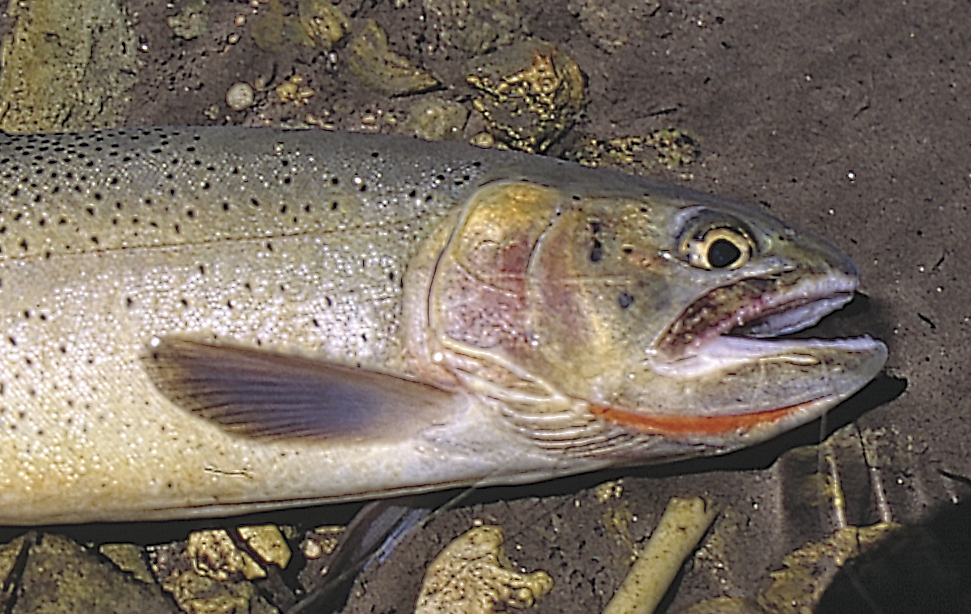
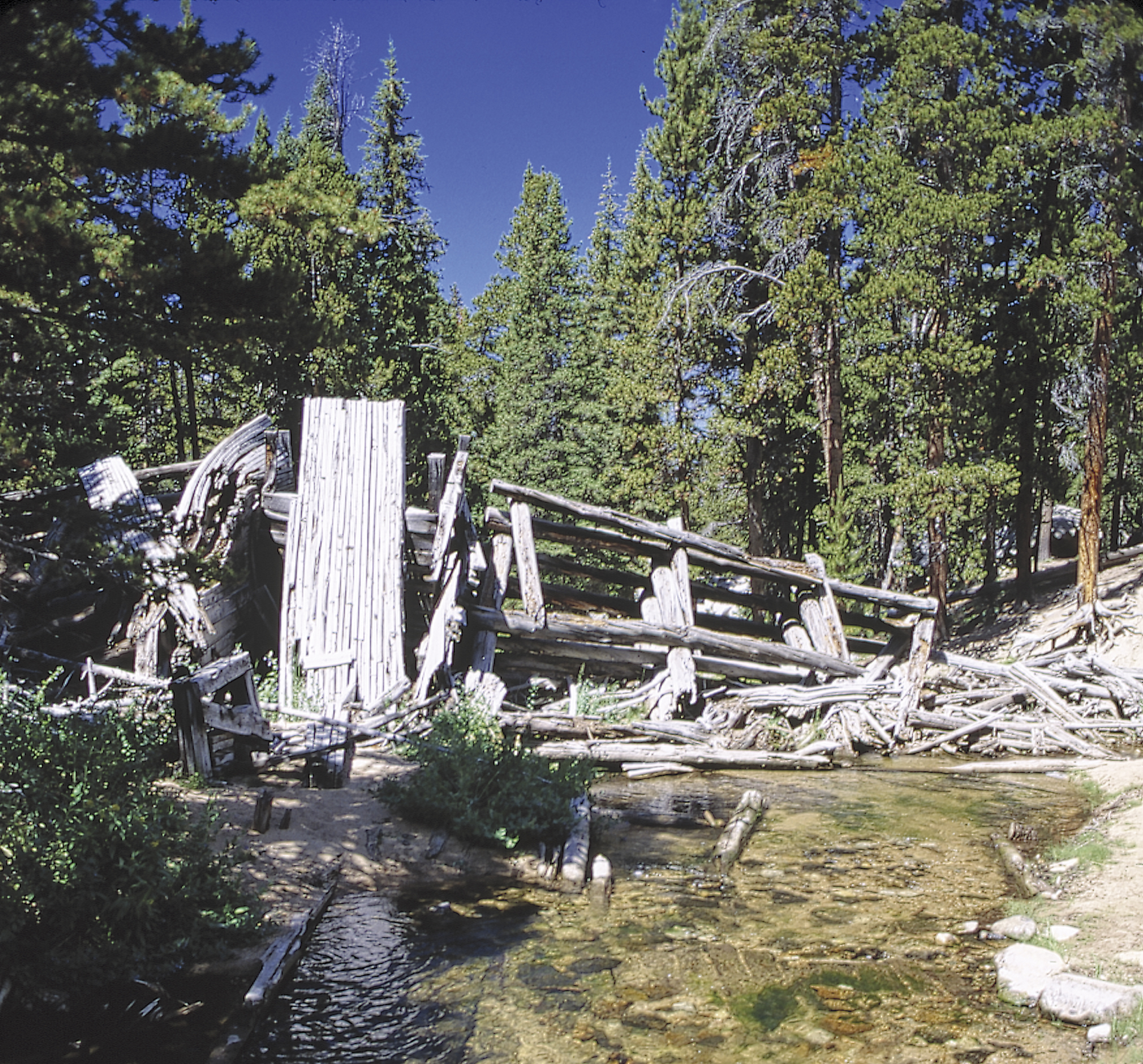

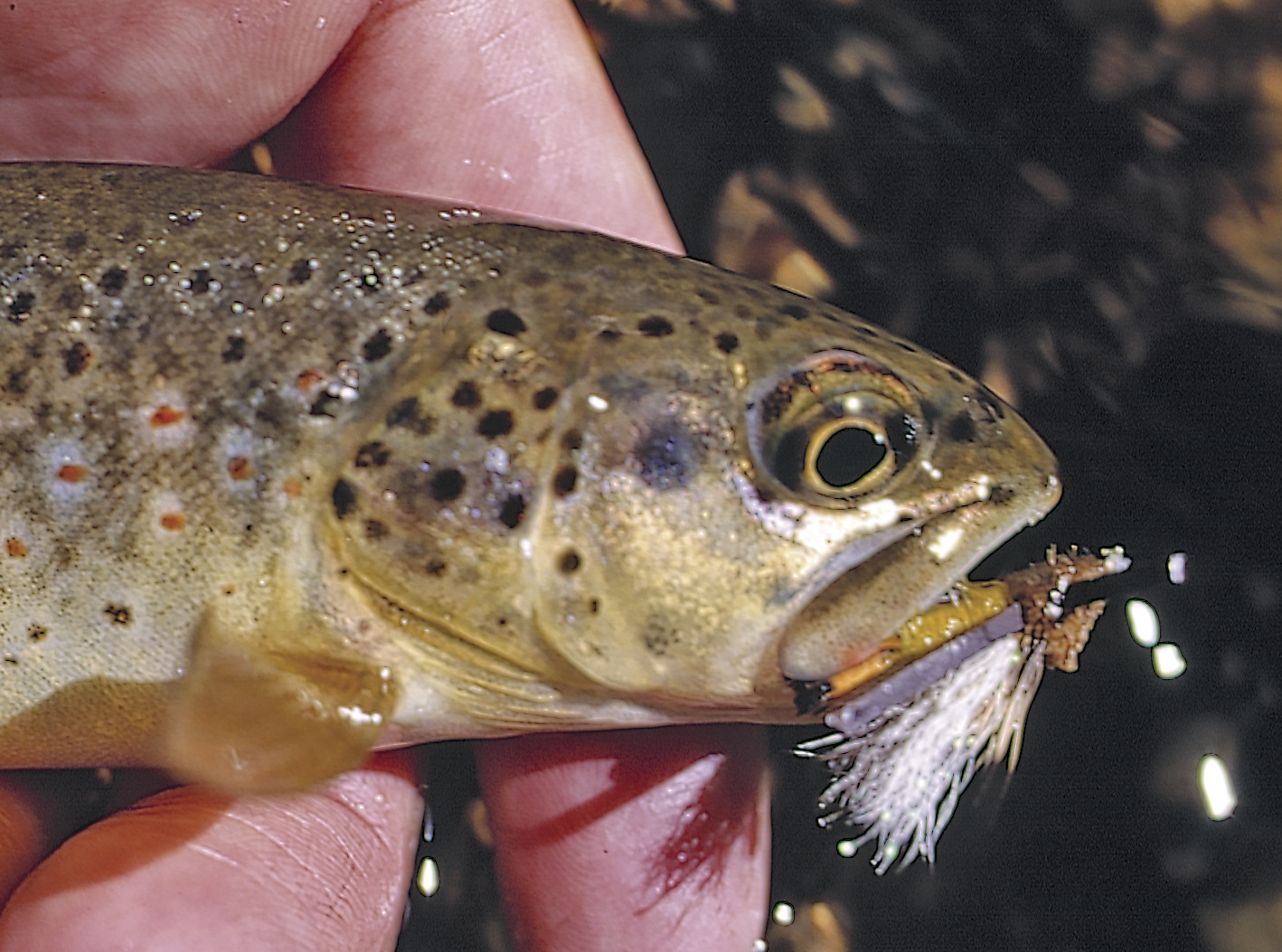
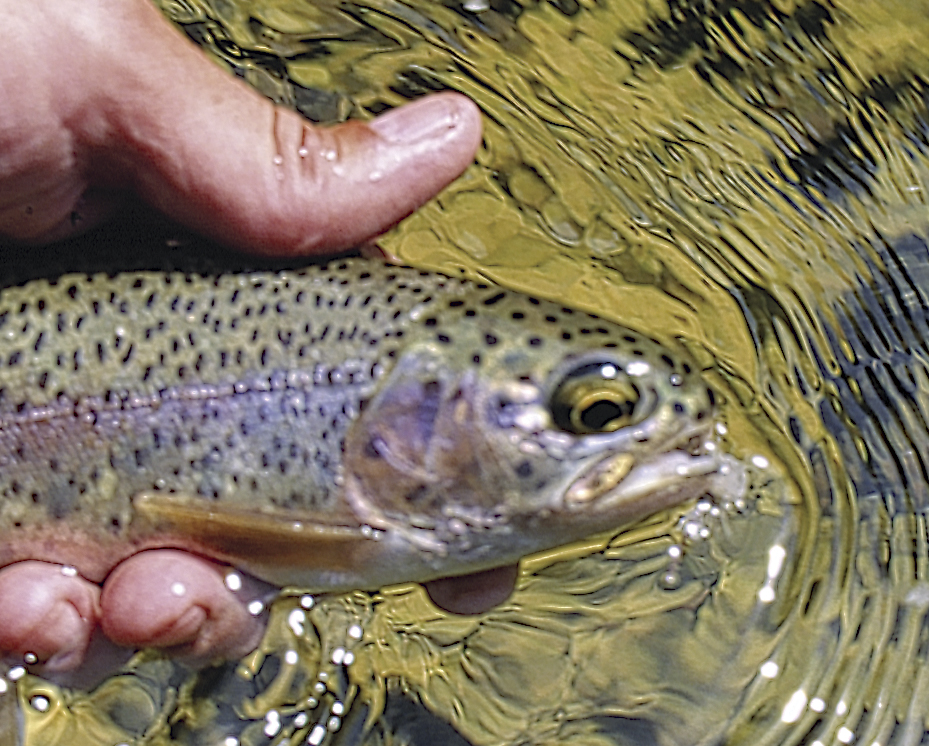
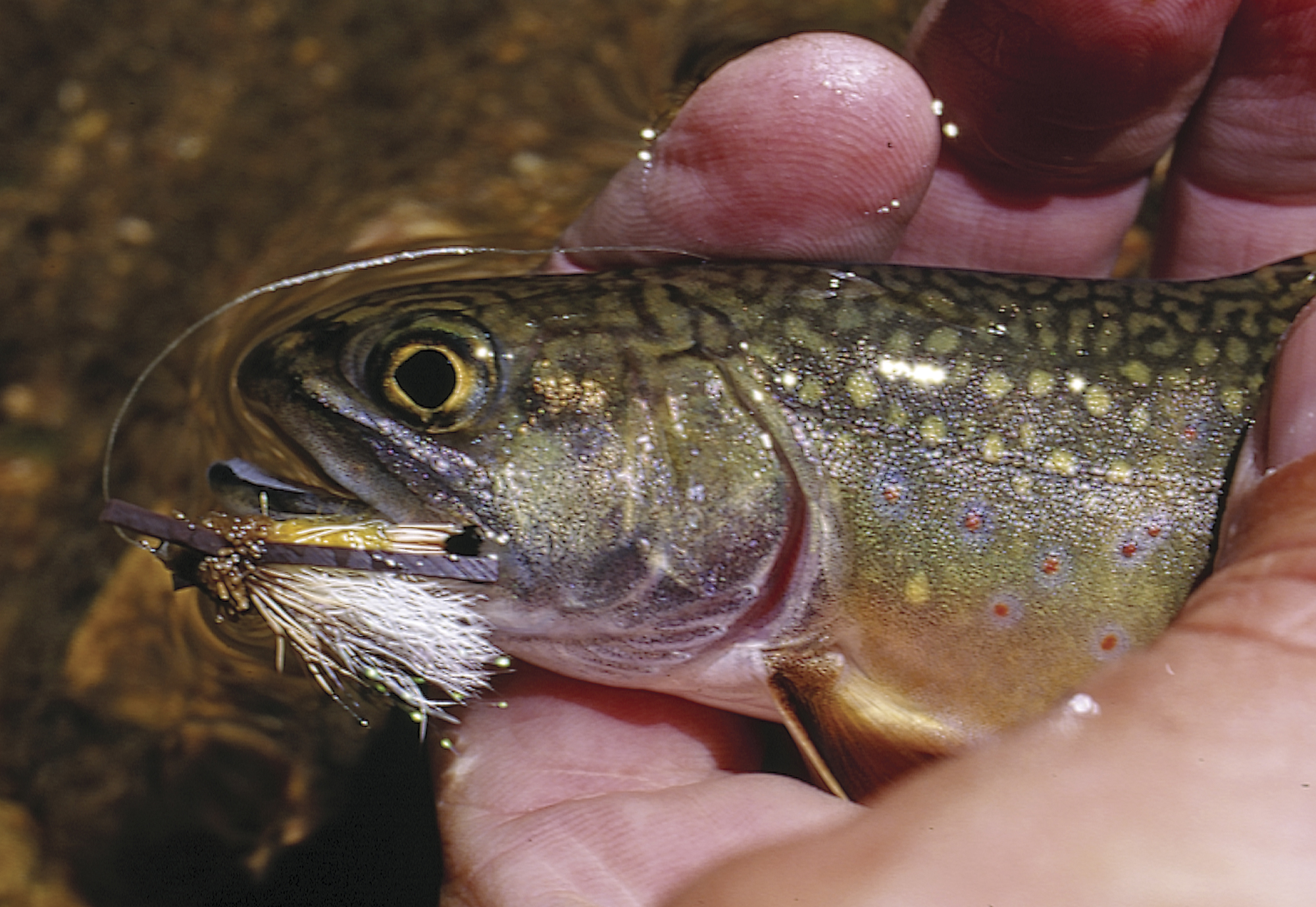
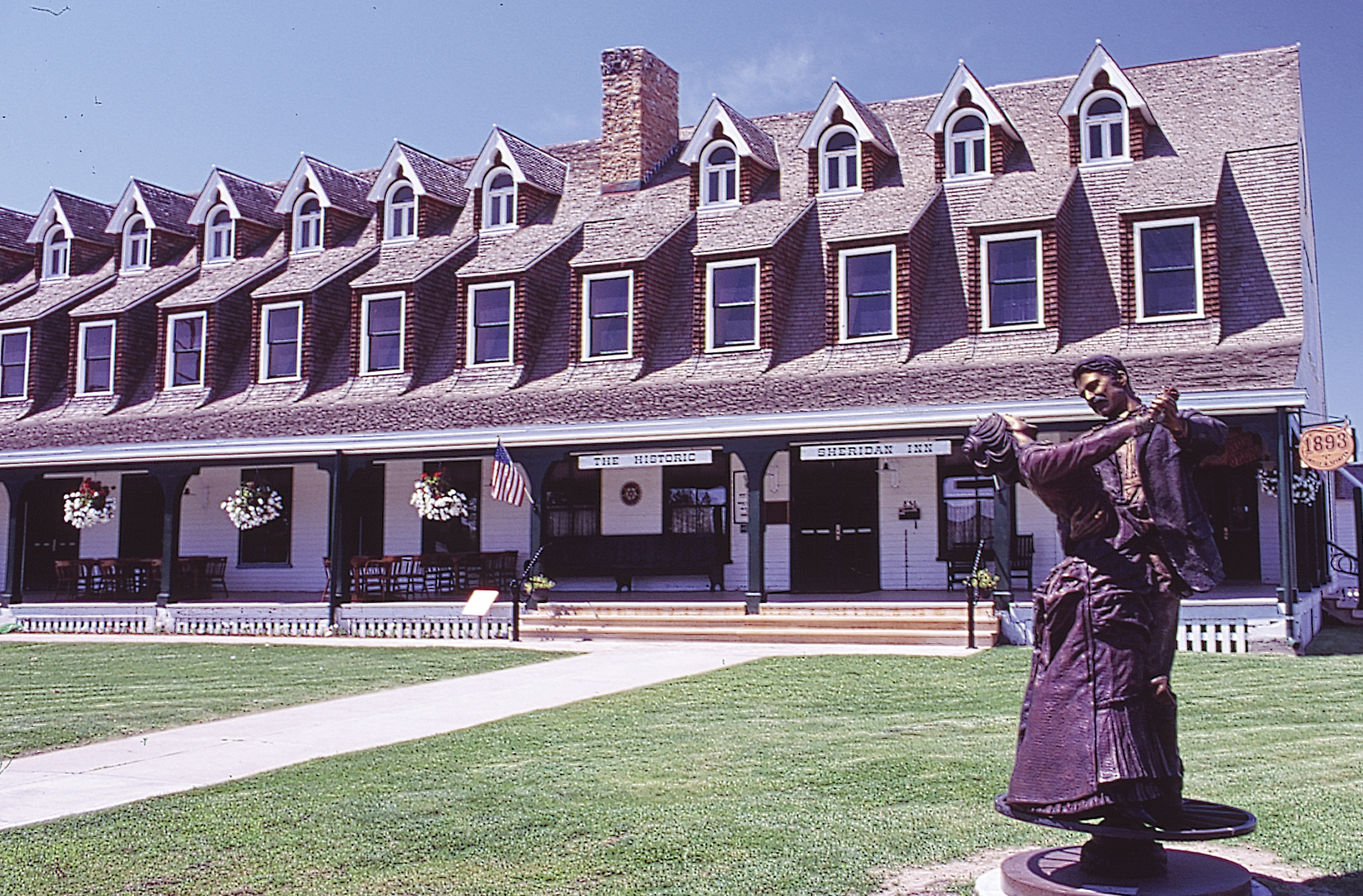
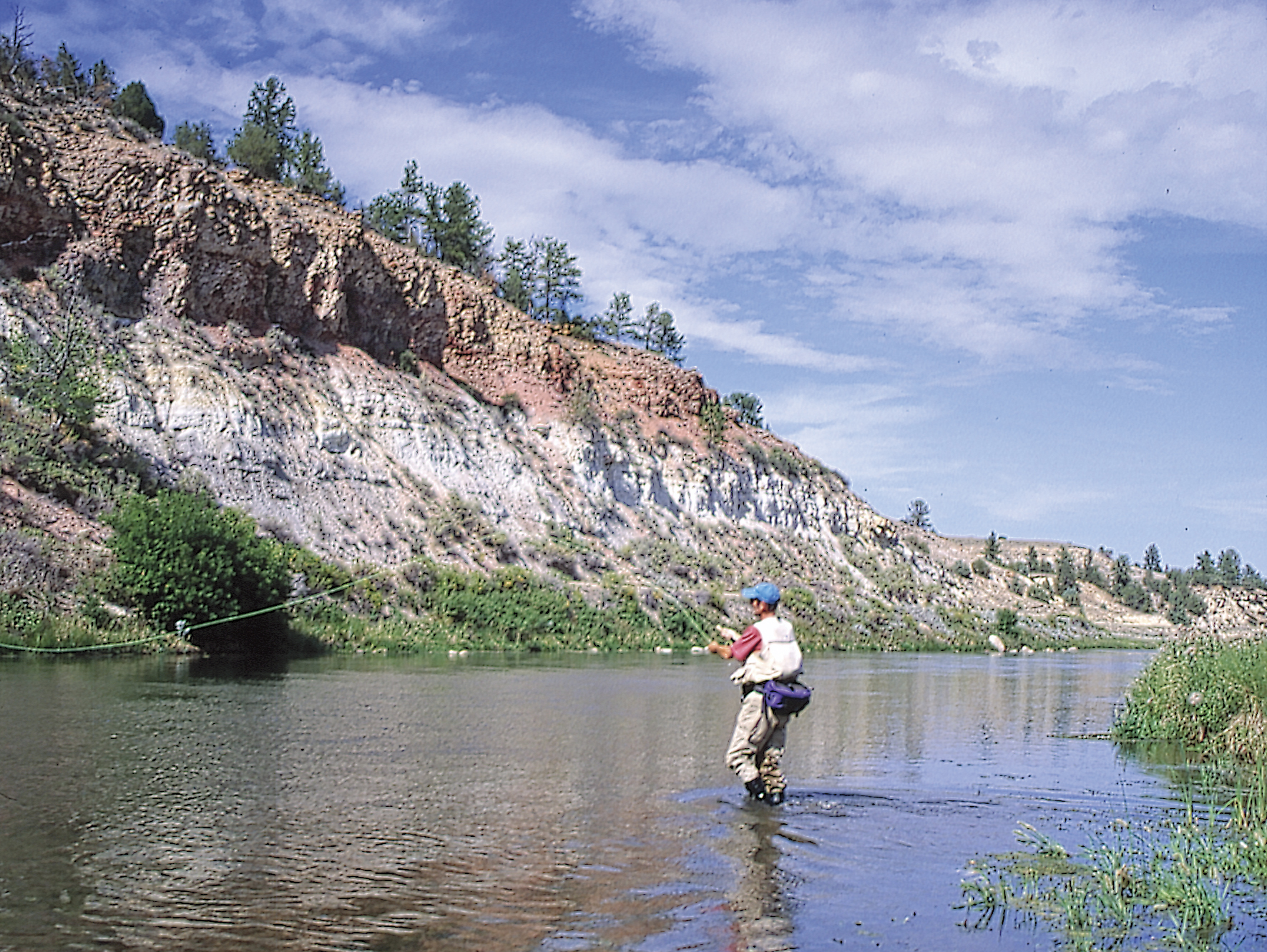
No Comments